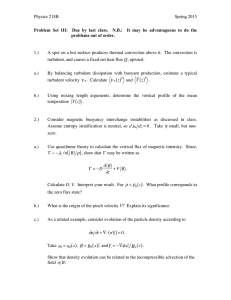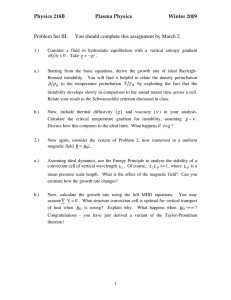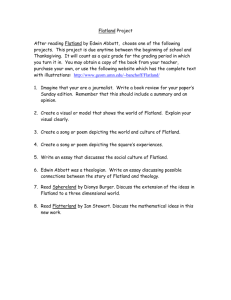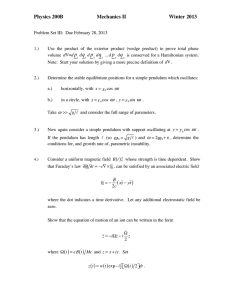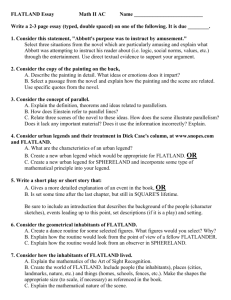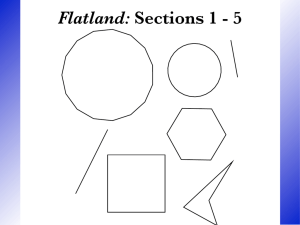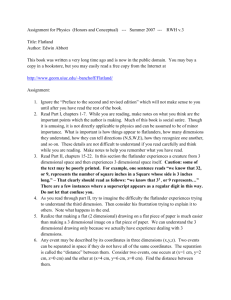Physics 218B Plasma Physics Winter 2010 Problem Set III:
advertisement
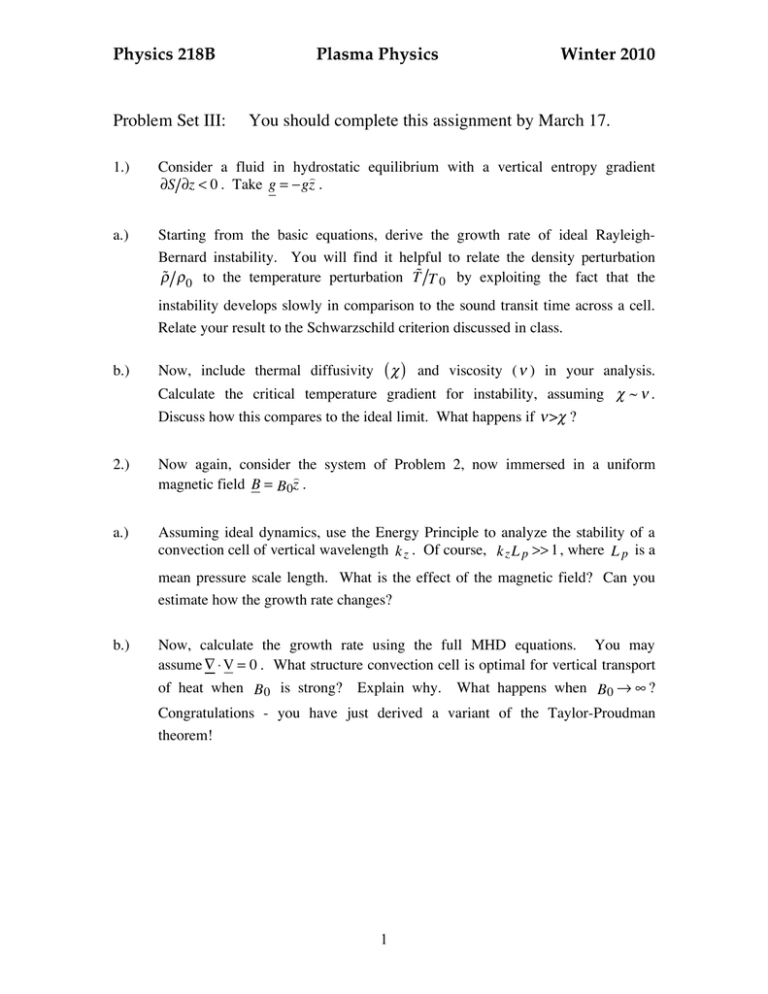
Physics 218B Problem Set III: Plasma Physics Winter 2010 You should complete this assignment by March 17. 1.) Consider a fluid in hydrostatic equilibrium with a vertical entropy gradient ! !S !z < 0 . Take g = !gz . a.) Starting from the basic equations, derive the growth rate of ideal RayleighBernard instability. You will find it helpful to relate the density perturbation !! ! 0 to the temperature perturbation T! T 0 by exploiting the fact that the instability develops slowly in comparison to the sound transit time across a cell. Relate your result to the Schwarzschild criterion discussed in class. b.) Now, include thermal diffusivity (!) and viscosity ( ! ) in your analysis. Calculate the critical temperature gradient for instability, assuming ! ~ " . Discuss how this compares to the ideal limit. What happens if ! >" ? 2.) Now again, consider the system of Problem 2, now immersed in a uniform ! magnetic field B = B 0z . a.) Assuming ideal dynamics, use the Energy Principle to analyze the stability of a convection cell of vertical wavelength k z . Of course, k z L p >> 1 , where L p is a mean pressure scale length. What is the effect of the magnetic field? Can you estimate how the growth rate changes? b.) Now, calculate the growth rate using the full MHD equations. You may assume ! " V = 0 . What structure convection cell is optimal for vertical transport of heat when B 0 is strong? Explain why. What happens when B 0 ! " ? Congratulations - you have just derived a variant of the Taylor-Proudman theorem! 1 Physics 218B Plasma Physics Winter 2010 c.) Compare and contrast this interchange instability to an incompressible RayleighTaylor instability. Make a table showing the detailed correspondences. 4.) Taylor in Flatland Taylor awakes one morning, and finds himself in Flatland, a 2D world. Seeking to relax, he sets about reformulating his theory for that planar universe. a.) Write down the visco-resistive 2D MHD equations, and show that three quadratic quantities are conserved, as ! " 0 , ! " 0 . b.) Which of these is the most likely to constrain magnetic relaxation? Argue that i.) ii.) the local version of this quantity is conserved for an 'flux circle', as ! " 0, the global version is the most "rugged", for finite ! . c.) Formulate a 2D Taylor Hypothesis - i.e. that magnetic energy is minimized while the quantity you identified from b.) ii.) is conserved. What equation describes this state? Show that the solution is force-free. What quantity is constant in Flatland? Hence, what is the endstate of Taylor relaxation in 2D? d.) Consider the possibility that ! >> " in Flatland. Derive the mean field evolution equation for mean magnetic potential. Discuss! e.) 5.) Optional - Extra Credit - Describe the visit of the Terrifying Torus to Flatland. How would 2D Taylor perceive this apparition? N.B. You may find it useful to consult Flatland, by E. Abbott. Drift-Alfven Waves a.) Derive three coupled reduced fluid equations for ! , A|| , n . You may assume T e >> T i and electrons are isothermal. Include a strong B0 = B0 zˆ and n = n( r ) . 3 Physics 218B b.) Plasma Physics Winter 2010 Show that in the limit where A|| is negligible, you recover the HasegawaWakatani system. Calculate the dispersion relation for drift instability in 2 this system. Discuss your result in the limit k ||2 vTh !" >> 1. c.) Calculate the quasi-linear particle flux related to b.), above. d.) Show that if nˆ and d n dr are negligible, you recover reduced MHD. What waves are present in this system? Discuss and derive the dispersion relation. e.) Derive the dispersion relation for the full 3 equation system. Discuss how 2 drift and shear-Alfven waves couple for k ||2 vTh !" > 1. 4
